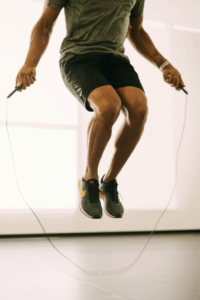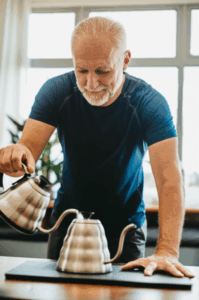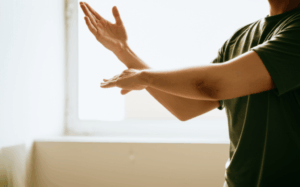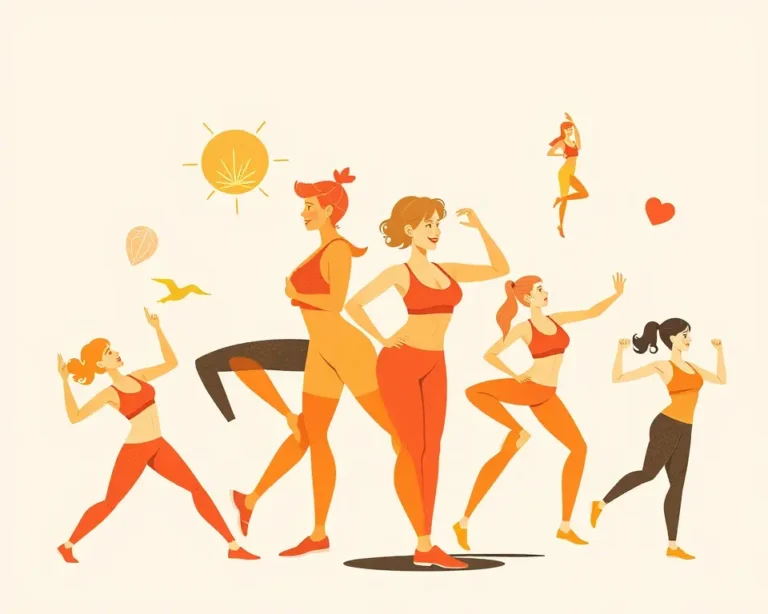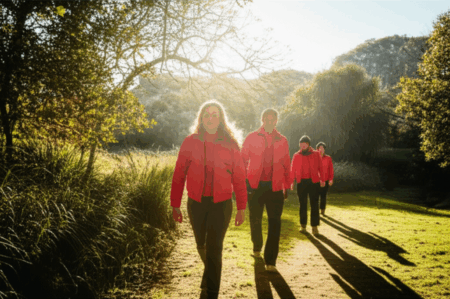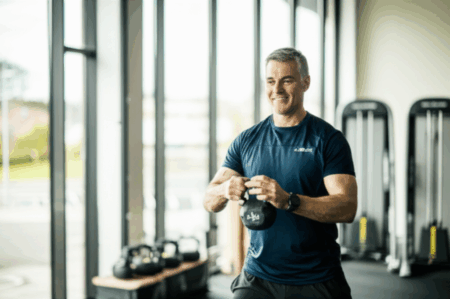Reaching 50 is a remarkable milestone, a time to embrace wisdom, experience, and a deeper understanding of oneself. As women enter this vibrant chapter, prioritizing health and well-being becomes paramount. A well-designed fitness routine can be a powerful tool, not just for maintaining physical vitality but also for enhancing mental and emotional resilience. This guide highlights four key areas that every woman over 50 should focus on in her fitness journey, ensuring a future filled with strength, energy, and joy.
1. Strength Training: Building a Foundation of Power
As women age, they naturally begin to lose muscle mass, a process known as sarcopenia. This can lead to decreased strength, mobility, and an increased risk of falls. Strength training is crucial for combating this decline, helping to maintain and even build muscle mass, which in turn supports bone density, improves balance, and boosts metabolism.
Why Strength Training Matters
- Combats Muscle Loss: Strength training stimulates muscle protein synthesis, helping to preserve and rebuild muscle tissue.
- Strengthens Bones: Weight-bearing exercises put stress on bones, signaling them to become denser and stronger, reducing the risk of osteoporosis.
- Enhances Balance and Coordination: Stronger muscles improve stability and coordination, reducing the risk of falls, a major concern for older adults.
- Boosts Metabolism: Muscle tissue burns more calories than fat tissue, so increasing muscle mass can help maintain a healthy weight and improve metabolic function.
- Improves Functional Fitness: Strength training makes everyday tasks easier, such as carrying groceries, climbing stairs, and getting up from a chair.
Getting Started with Strength Training
- Start Slowly: If you’re new to strength training, begin with bodyweight exercises like squats, push-ups (modified on your knees if needed), and planks.
- Use Resistance Bands: Resistance bands are a great way to add resistance without the need for heavy weights. They are also portable and versatile.
- Consider Fixed Resistance Machines: Gym machines can help guide you through the proper form and isolate specific muscle groups.
- Work with a Trainer: A certified personal trainer can create a customized strength training program tailored to your individual needs and goals.
- Focus on Compound Exercises: Compound exercises work multiple muscle groups simultaneously, maximizing your workout efficiency. Examples include squats, lunges, deadlifts, and overhead presses.
- Listen to Your Body: Rest and recovery are essential for muscle growth and preventing injuries. Don’t overdo it, and allow your muscles time to recover between workouts.
Sample Strength Training Exercises
- Squats: Stand with feet hip-width apart, lower your hips as if sitting in a chair, keeping your back straight and knees behind your toes.
- Push-ups: Start in a plank position, lower your chest towards the floor, and push back up. Modify on your knees if needed.
- Lunges: Step forward with one leg and lower your body until both knees are bent at 90 degrees. Alternate legs.
- Dumbbell Rows: Bend over with a straight back, holding a dumbbell in each hand, and pull the weights up towards your chest, squeezing your shoulder blades together.
- Overhead Press: Stand with feet hip-width apart, holding a dumbbell in each hand, and press the weights overhead.
2. Cardiovascular Exercise: Fueling Your Heart and Lungs
Cardiovascular exercise, also known as aerobic exercise, is essential for maintaining a healthy heart, lungs, and circulatory system. It helps to improve endurance, burn calories, and reduce the risk of chronic diseases such as heart disease, stroke, and diabetes.
Benefits of Cardiovascular Exercise
- Improves Heart Health: Cardio strengthens the heart muscle, lowers blood pressure, and improves cholesterol levels.
- Boosts Energy Levels: Regular cardio can increase energy levels and reduce fatigue.
- Helps Manage Weight: Cardio burns calories, which can help with weight loss or maintenance.
- Reduces Stress: Exercise releases endorphins, which have mood-boosting and stress-reducing effects.
- Improves Sleep: Regular physical activity can promote better sleep quality.
Choosing the Right Cardio Activities
- Walking: A simple and accessible activity that can be done anywhere, anytime. Aim for a brisk pace that elevates your heart rate.
- Swimming: A low-impact exercise that’s gentle on the joints, making it ideal for those with arthritis or other joint pain.
- Cycling: Another low-impact option that can be done outdoors or indoors on a stationary bike.
- Dancing: A fun and social way to get your heart pumping.
- Group Fitness Classes: Consider joining a Zumba, aerobics, or other cardio-based class.
Recommendations for Cardio Exercise
- Aim for at least 150 minutes of moderate-intensity cardio per week: This could be broken down into 30-minute sessions, five days a week.
- Or, aim for 75 minutes of vigorous-intensity cardio per week: This could include activities like running or high-intensity interval training (HIIT).
- Incorporate variety: Mix up your cardio routine to prevent boredom and challenge different muscle groups.
- Listen to your body: Adjust the intensity and duration of your workouts based on your fitness level and how you’re feeling.
3. Flexibility and Balance: Maintaining Mobility and Preventing Falls
Flexibility and balance are often overlooked, but they are crucial components of a well-rounded fitness routine, especially for women over 50. As we age, our joints become stiffer, and our balance can decline, increasing the risk of falls and injuries.
Why Flexibility and Balance Matter
- Improves Range of Motion: Stretching and flexibility exercises help maintain and improve range of motion in your joints, making everyday movements easier.
- Reduces Risk of Injury: Flexible muscles are less prone to strains and tears.
- Enhances Balance: Balance exercises improve your ability to maintain stability, reducing the risk of falls.
- Improves Posture: Flexibility and balance exercises can help improve posture and reduce back pain.
- Promotes Relaxation: Stretching can help reduce muscle tension and promote relaxation.
Incorporating Flexibility and Balance into Your Routine
- Yoga: A mind-body practice that combines stretching, strengthening, and balance poses.
- Pilates: Focuses on core strength, flexibility, and body awareness.
- Tai Chi: A gentle, flowing exercise that improves balance and coordination.
- Stretching: Incorporate static stretches (holding a stretch for 30 seconds) after each workout.
- Balance Exercises: Practice standing on one leg, walking heel-to-toe, or using a balance board.
Sample Flexibility and Balance Exercises
- Hamstring Stretch: Sit on the floor with your legs extended, and reach towards your toes.
- Calf Stretch: Stand facing a wall, place one foot slightly behind the other, and lean forward until you feel a stretch in your calf.
- Shoulder Stretch: Reach one arm across your body and gently pull it closer with your other arm.
- Tree Pose (Yoga): Stand on one leg and place the sole of your other foot on your inner thigh, pressing your palms together at your chest.
- Heel-to-Toe Walk: Walk in a straight line, placing the heel of one foot directly in front of the toes of the other foot.
4. Nutrition and Hydration: Fueling Your Body from the Inside Out
While exercise is crucial, it’s only one piece of the puzzle. Proper nutrition and hydration are equally important for women over 50, as they provide the fuel and building blocks your body needs to function optimally.
Key Nutritional Considerations
- Calcium: Essential for bone health, especially as estrogen levels decline during menopause. Good sources include dairy products, fortified plant-based milks, leafy green vegetables, and canned fish with bones. Aim for 1,200 mg per day.
- Vitamin D: Helps the body absorb calcium and is also important for bone health. Good sources include fatty fish, fortified foods, and sunlight exposure. Adults up to age 70 need 600 IU of vitamin D every day, and those 71 and older need 800 IU.
- Protein: Important for maintaining muscle mass and strength. Aim to include protein at each meal. Good sources include lean meats, poultry, fish, eggs, beans, lentils, tofu, and nuts.
- Fiber: Promotes digestive health, helps regulate blood sugar levels, and can aid in weight management. Good sources include whole grains, fruits, vegetables, and legumes.
- Healthy Fats: Essential for hormone production, brain function, and overall health. Choose unsaturated fats from sources like avocados, nuts, seeds, and olive oil.
- B Vitamins: Especially Vitamin B6 and B12 are important for nerve function, red blood cell formation, and energy levels.
Hydration is Key
- Drink plenty of water throughout the day: Aim for at least eight glasses of water per day.
- Carry a water bottle with you: This will help you stay hydrated on the go.
- Eat water-rich foods: Fruits and vegetables like watermelon, cucumbers, and spinach can help you stay hydrated.
- Limit sugary drinks: Sodas, juices, and other sugary drinks can contribute to weight gain and other health problems.
Dietary Recommendations
- Follow a balanced diet: Focus on whole, unprocessed foods, including plenty of fruits, vegetables, whole grains, lean protein, and healthy fats.
- Limit processed foods, sugary drinks, and unhealthy fats: These can contribute to weight gain and other health problems.
- Pay attention to portion sizes: As metabolism slows with age, it’s important to be mindful of how much you’re eating.
- Consider the Mediterranean diet: This diet is rich in fruits, vegetables, whole grains, legumes, nuts, seeds, and olive oil, and has been shown to have numerous health benefits.
- Consult with a registered dietitian: A dietitian can help you create a personalized meal plan based on your individual needs and goals.
Listen to Your Body and Stay Consistent
The most important thing is to listen to your body and be consistent with your fitness routine. Don’t try to do too much too soon, and be sure to give yourself rest days to recover. Find activities that you enjoy and that fit into your lifestyle, and make exercise a regular part of your day. Remember, it’s never too late to start prioritizing your health and well-being. With a focus on strength training, cardiovascular exercise, flexibility, balance, and proper nutrition, women over 50 can live active, healthy, and fulfilling lives.

